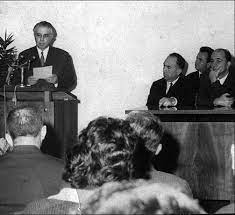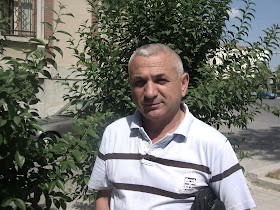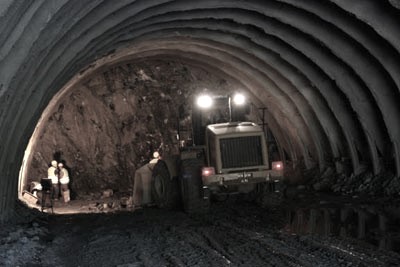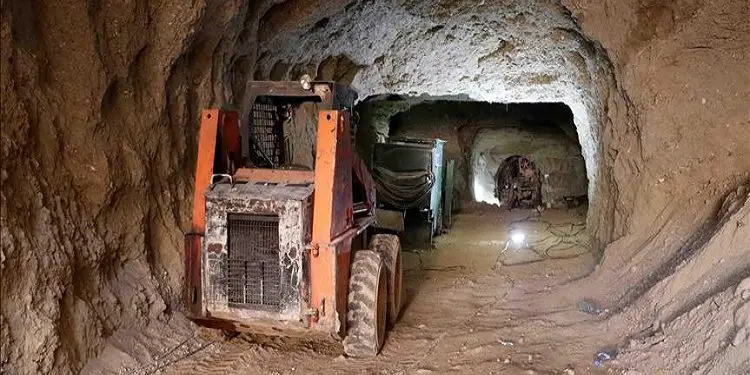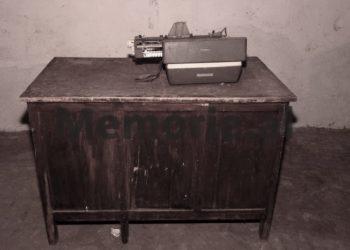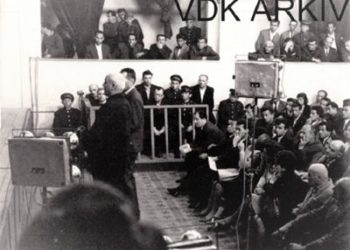By Mark Brunga
Memorie.al / Some time ago, a special news was published in the media, about the discovery of some underground constructions in the city of Kukës that were called; “unbelievable”! A hospital for 500 beds, a bread factory, other spaces for a military command post and many offices for the administration. In the comment of this news, it was emphasized that; it is not a surprise, when some time ago, the foreign international media ranked Albania, after the USA and Switzerland, as the country with the greatest security, for nuclear and atomic attacks, due to the numerous shelters, built during the cold war. Based on this information, for the sake of truth, the object that appeared for the first time from the underground of Kukës, is only the tip of the iceberg of the gigantic works, which were done in a secret way, for the protection of the country, in the period of the system past of the communist regime.
In the city of Durrës, this tunneling has had much larger proportions. Meanwhile, works have been carried out for a medical system, as effective as possible, in military hospitals in many districts, such as; Korça, Elbasan, Durrës, Shkodra, Vlora, etc. Starting from Kukësi, there may be many others. For this, I am referring to some notes I kept a few years ago, in conversations with ex-soldiers who told me in detail about the constructions made in Durrës, about underground works of this nature.
They emphasized that in the years of the cold war in Albania, a great deal of ideological work was done, accompanied by practical training, to face a long war, against the eventual attacks of the superpowers of that period, or neighboring countries. For this, numerous armaments were provided for the structures of the Armed Forces, where approximately 700,000 ready and reservist troops entered, training for war. In order to fight a long and effective battle in defense of our borders, one of the priorities of the defense was, in addition to bunkering, the tunneling of strategic areas, which would allow the least possible damage to our military troops.
For cases of various injuries, there were a number of military hospitals, complete with specialist doctors, and many of these hospitals were designed in underground tunnels. A soldier of that period, Shpendi Topollaj, said that the medical aid system in the army was one of the most perfect. In the period when the option of fighting “tooth for tooth” with the enemy was the option of the day, he said, in every military department, there was a chief of health, who was a highly qualified doctor, who was either a military doctor or a reserve doctor, included in the department as head of health, for a special time and in the composition of the team, there was also an assistant doctor or sanatorium.
In this framework, each battalion had field hospitals prepared for all variants of war. The brigades were more complete. Here, health depended on the rear unit. It was very well equipped and carried out in peacetime, up to operational interventions, in cases of training and trauma. They were field hospitals, but also systematized in tunnels. These types of hospitals under the surface of the earth had networks and ventilation systems, with ventilation filters, so that even in cases of the use of weapons of mass destruction, the work for the health rehabilitation of the sick or injured would not be interrupted and damaged.
Military hospitals were equipped with state-of-the-art operating rooms of that period that were kept in reserve for special times, as well as health medications that were constantly renewed. For a medical system as effective as possible, military hospitals were distributed in many districts, such as; Korça, Elbasan, Durrës, Shkodra, Vlora, etc. In that period, great importance was attached to the construction of an underground hospital in Durrës, of the Swedish type, which also had a very large financial cost.
THE UNDERGROUND HOSPITAL OF DURRES, ACCORDING TO THE TESTIMONY OF OFFICER LUTFI SHEHU
Lutfi Shehu, who is now a retired officer, for about 12 years, has served in Durres as the Chief of Civil Defense, near the Executive Committee of the People’s Council of the Durres District. He shows that; one of the largest underground constructions is the Durrës Hospital, compared to many other underground works, built for a special time in the hill crown of the city. The underground Military Hospital was built in the vicinity of the then Durrës Hospital, where the Regional Hospital has already been re-erected, in relative proximity. For emergency cases, the civilian hospital communicated with the underground military one, with a special tunnel, also built in secret in a secret way, just as the entire underground hospital was built. The hospital had a capacity of 500 beds.
Lutfiu says that the decision to build the underground hospital was taken in 1981 by the Council of Ministers and its construction continued until 1991. The proposal for this facility was made by the Directorate of Civil Protection, with director Rrapi Minon. Its design was undertaken by the Institute of Design of Defense Works, in close cooperation with the Ministry of Health. After the decision was made, the topographers and engineers came, who, in collaboration with the Institute of the Ministry of Health, found a suitable place where the underground military hospital would be built. It was determined to be built on the hill near the existing hospital, since it was foreseen that in the event of an air strike, the connection between the two facilities would be made by tunnel, for the transport of the sick or the possible wounded.
It was designed to have three entrances and exits. One had the function of entry and reception of the sick and crippled the other of supply, and the third of exit. The hospital first became a tunnel, with a wide section, and then expanded and branched into separate sections. The beginning was the patient reception and control sector, where soldiers were disinfected and degassed by a special anti-chemical ward in cases of combat poisons. There, the degree of damage to the injuries was examined and the room was determined, where the therapy would take place.
The hospital had designed, in addition to the waiting ward, illnesses, minor injuries, surgery, and a trauma liquidation hall. At the beginning of the processing, it was the shower room. The underground tank had water reserves for a month of autonomy. While the underground pipelines were also working, with the main water storage of the city. There was also a modern laboratory inside, for the necessary analyzes and diagnostics. It was foreseen that the doctors of the Durrës hospital would serve, as well as the military doctors who were in the wards of the area. For example, the doctors of the Xenjero-Chemical Battalion, which was located nearby and were specialized?
DEPUTY PRIME MINISTER BEKTESHI CONGRATULATES THE TALENTED ENGINEER SABRI ÇIKU ON THE WORKS
Lutfiu says that he and Lefter Shuka regularly reported on the progress of the works to the higher state authorities. While the implementation was carried out by the Defense Site, led by the excellent engineer, Sabri Çiku, who had selected a staff of professional employees, who amazed even the Deputy Prime Minister Besnik Bekteshi with the way of working and the rare quality of the works carried out. It was 1985, when Bekteshi came. His attention was drawn to the work of specialists led by Sabri Çiku. The objects and reinforced concrete elements were produced inside, staged inside the tunnel and assembled by them, in secret conditions, without anyone from the outside knowing what was done in the depths of the underground.
After seeing all that volume of work done, in difficult conditions, full of sacrifices, breaking every kind of technical standard, Deputy Prime Minister Bekteshi proposed one of these specialists for decoration and ordered that a monthly salary be planned for them, for all. For the construction of the secret underground hospital, the best quality iron and concrete that our country had at that time was used. The iron used in these tunnels was the same as that used for the Fierza hydropower plant, while the concrete was of brand 400 and above. The site set up in Durrës consisted of about 60 workers, specialists and engineers.
Technicians and workers have been highly qualified, for internal underground works. They had gained experience in the construction of hydropower plants in Shkopet and Bistrica, and after that, they came to Durrës. Regarding the construction technique, it must be said that it was not a modern technique. Excavator tractors were used to dig deep into the tunnels, which were provided by the army engineering department. While it was said that the projects for their construction were taken from the Nordic countries, mainly Sweden and Norway.
THE LIFE OF THE PROJECT IMPLEMENTER, SABRI ÇIKU
The constructor of the implementation of the Underground Hospital project, Sabri Çiku, was born on April 10, 1939, in the village of Fushë-Muhur in Peshkopia. At the age of 8, he remains an orphan and in a bad economic situation. He finishes primary school in his native village, while he completes his 7-year education in Peshkopi, in a state dormitory. After this period, he goes as a student to the high school of construction in Tirana. After finishing school with good results, he is sent by the state to the Soviet Union, as a student at the military school of Aviation in Shadrinek, Krasnodar, in the specialty of Sturman, Bomber.
In 1961, after the breakup with the Soviet Union, being with excellent results in lessons, he was sent to the People’s Republic of China, to study in the same specialty. In 1963, he returned from China with a very special characteristic, as an excellent student, but due to health reasons, he could not continue working in aviation and started working at the Port Construction Enterprise in Durrës.
He studied and graduated in Civil Engineering and in 1970, he moved to the position of director in the “Kumunale Banesa” enterprise of this city, while in the early 80s, he started working as the director of the Defense Works Site. He built several important buildings, including the Secret Hospital in the 10th district. He received several different decorations and medals. Died at the age of 60, at the turn of the century, in 1999. Memorie.al




